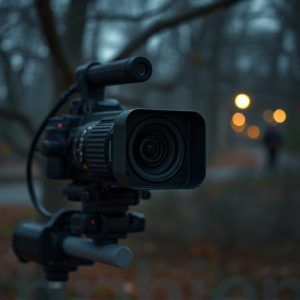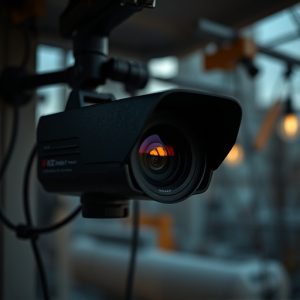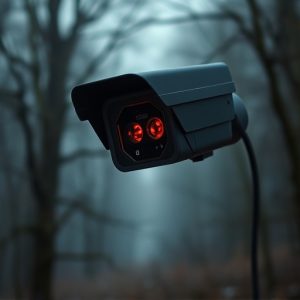Home Microphone Bug Sweeping: Techniques, Risks, Legalities & Prevention
Microphone bug sweeping and spy camera detection are crucial for safeguarding privacy in sensitive e…….
Microphone bug sweeping and spy camera detection are crucial for safeguarding privacy in sensitive environments, especially childcare centers. By combining physical inspections with technological tools like electromagnetic field detectors and audio analysis software, professionals can locate hidden microphones and cameras. A comprehensive Spy Camera Childcare Safety Guide emphasizes security protocols, regular inspections, and transparent communication to foster trust and protect children's well-being. Homeowners should also conduct periodic security audits to identify vulnerabilities and protect privacy from advanced surveillance technology, adhering to legal and ethical standards.
“In an era where privacy is a precious commodity, understanding microphone bug sweeping detection techniques is crucial for maintaining home security. This comprehensive guide delves into the intricacies of identifying hidden microphones, a growing concern in modern living spaces. We explore common detection methods, highlighting their effectiveness in securing your personal space. With a special focus on spy cameras in childcare settings, this article offers valuable insights into prevention measures and the importance of regular security audits. Additionally, it navigates the legal and ethical aspects, providing an all-encompassing Spy Camera Childcare Safety Guide.”
- Understanding Microphone Bug Sweeping: A Comprehensive Overview
- Common Techniques for Detecting Hidden Microphones at Home
- Spy Cameras in Childcare Settings: Risks and Prevention Measures
- The Importance of Regular Security Audits for Your Home
- Legal Aspects and Ethical Considerations for Bug Sweeping
Understanding Microphone Bug Sweeping: A Comprehensive Overview
Microphone bug sweeping, also known as audio surveillance or eavesdropping detection, is a critical practice in ensuring privacy and security, especially in sensitive spaces like homes, schools, and childcare centers. It involves specialized techniques to identify hidden microphones or recording devices that could be used for malicious purposes. This process is crucial for parents and caregivers who want to ensure the safety of their children; a spy camera or bug sweeping guide can serve as a valuable tool in this regard, offering step-by-step instructions on how to detect potential hidden threats.
In today’s digital age, where technology has become increasingly sophisticated, bugs can be tiny and hard to spot. From advanced voice recorders concealed as everyday objects to complex software capable of transmitting audio secretly, the methods used for surveillance are diverse. Microphone bug sweeping detection techniques employ a combination of physical inspections and technological tools, such as electromagnetic field detectors and audio analysis software. By utilizing these methods, professionals can locate hidden devices, ensuring peace of mind and safeguarding personal conversations and sensitive information from unauthorized listening or recording.
Common Techniques for Detecting Hidden Microphones at Home
Detecting hidden microphones, often referred to as spy cameras or bugs, is a crucial aspect of ensuring home security and privacy. Homeowners, especially those with young children, must be vigilant in protecting their personal spaces from potential surveillance devices. Several techniques have emerged to uncover these concealed threats, offering a sense of peace of mind.
One common method involves utilizing specialized detection tools designed to identify electromagnetic signals emitted by hidden microphones. These devices can pinpoint the exact location of a bug, helping homeowners discover covert listening devices. Additionally, visual inspections with high-resolution cameras and infrared technology can reveal tiny camera lenses or unusual wiring, indicating the presence of spy cameras in discreet areas like childcare spaces, bedrooms, or living rooms. A comprehensive Childcare Safety Guide may include these detection techniques to ensure a secure environment for children.
Spy Cameras in Childcare Settings: Risks and Prevention Measures
In recent years, the prevalence of spy cameras in childcare settings has raised significant concerns about privacy and safety. These hidden devices, often installed to monitor caregivers or protect children, can create an unethical balance between supervision and surveillance. This is especially true when parents are unaware of their presence, leading to a breach of trust. Therefore, a comprehensive Spy Camera Childcare Safety Guide becomes essential for both parents and childcare providers.
To mitigate these risks, childcare facilities should implement robust security protocols. Regular camera inspections and maintenance can help identify and remove any unauthorized devices. Additionally, transparent communication between staff and parents is key; informing everyone about the existence and purpose of cameras ensures a clear understanding of privacy measures. Furthermore, providing alternative forms of supervision, such as trained staff and age-appropriate monitoring techniques, can reduce the reliance on hidden surveillance, fostering an environment that prioritizes trust, transparency, and child well-being.
The Importance of Regular Security Audits for Your Home
Regular security audits are an essential component of maintaining a safe and secure home environment, especially with the rise of advanced surveillance technology like spy cameras. Just as a childcare center conducts thorough safety inspections to ensure child welfare, homeowners should implement periodic security checks to identify potential vulnerabilities. These audits can uncover hidden threats, such as covert listening devices or hidden microphones, which might compromise your privacy and personal data.
By integrating a comprehensive childcare safety guide for home security, you can proactively protect yourself and your loved ones from unforeseen risks. Regularly reviewing and updating your home’s security measures will help safeguard against evolving surveillance techniques and ensure peace of mind in an increasingly connected world.
Legal Aspects and Ethical Considerations for Bug Sweeping
Bug sweeping, particularly in private spaces like homes, raises important legal and ethical questions. While ensuring childcare safety through spy camera surveillance might seem like a proactive measure, it’s crucial to understand the boundaries set by privacy laws. In many jurisdictions, hidden cameras are illegal unless they meet specific requirements, such as being visible or having clear consent from all parties involved. For instance, recording conversations without consent can violate wiretapping laws.
Ethically, the use of bug sweeping should always prioritize transparency and respect for individual privacy. Parents considering this method should first explore alternative safety measures and ensure that any surveillance is conducted with open communication and knowledge of their children and caregivers. A well-informed approach, guided by a childcare safety guide focusing on legal and ethical practices, can help maintain trust while safeguarding privacy rights.
In an era where privacy concerns are paramount, understanding microphone bug sweeping and its detection techniques is essential for safeguarding your home and sensitive information. By familiarizing yourself with common methods like those discussed in this article—from identifying hidden microphones to navigating legal boundaries—you can take proactive steps towards ensuring a secure living environment, especially in high-risk areas like childcare settings. Regular security audits and a keen awareness of potential risks, as outlined in our Spy Camera Childcare Safety Guide, are key to protecting your privacy and that of those you care for.


